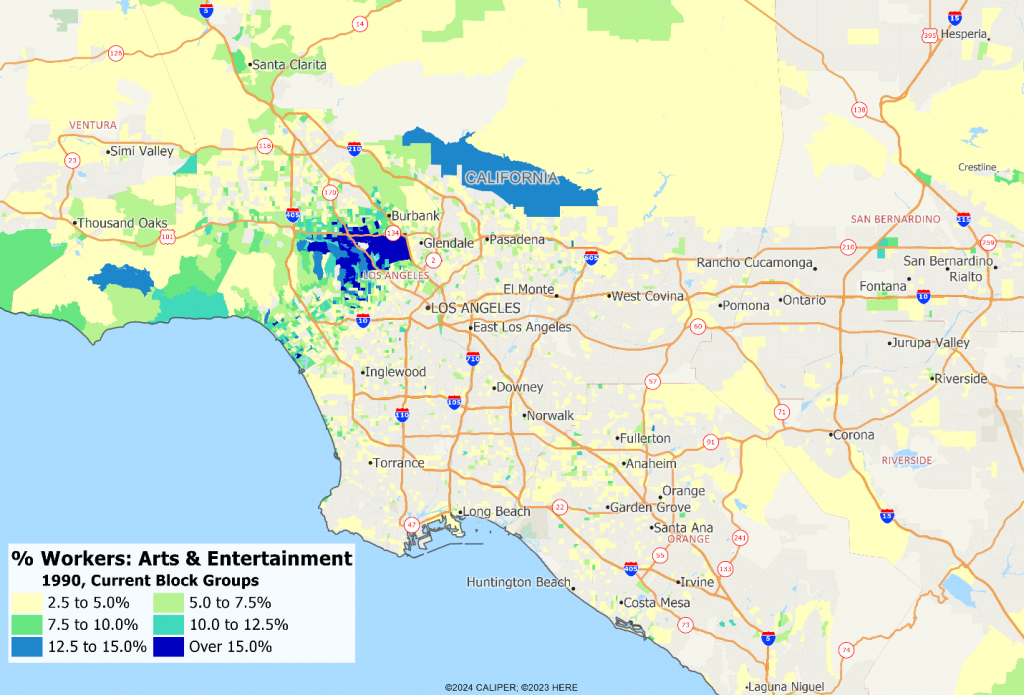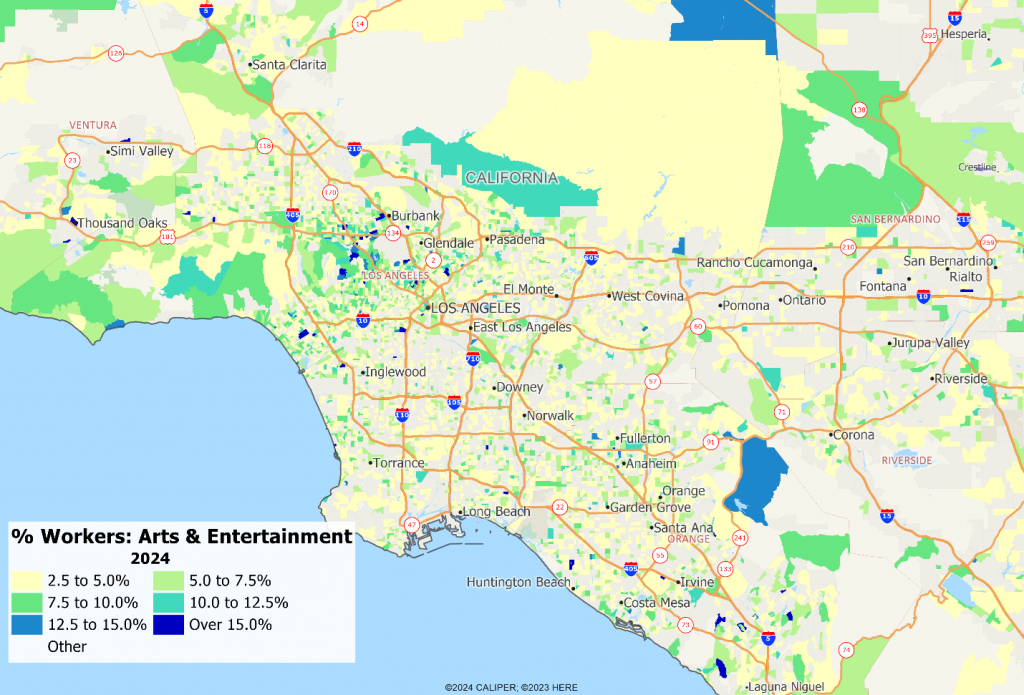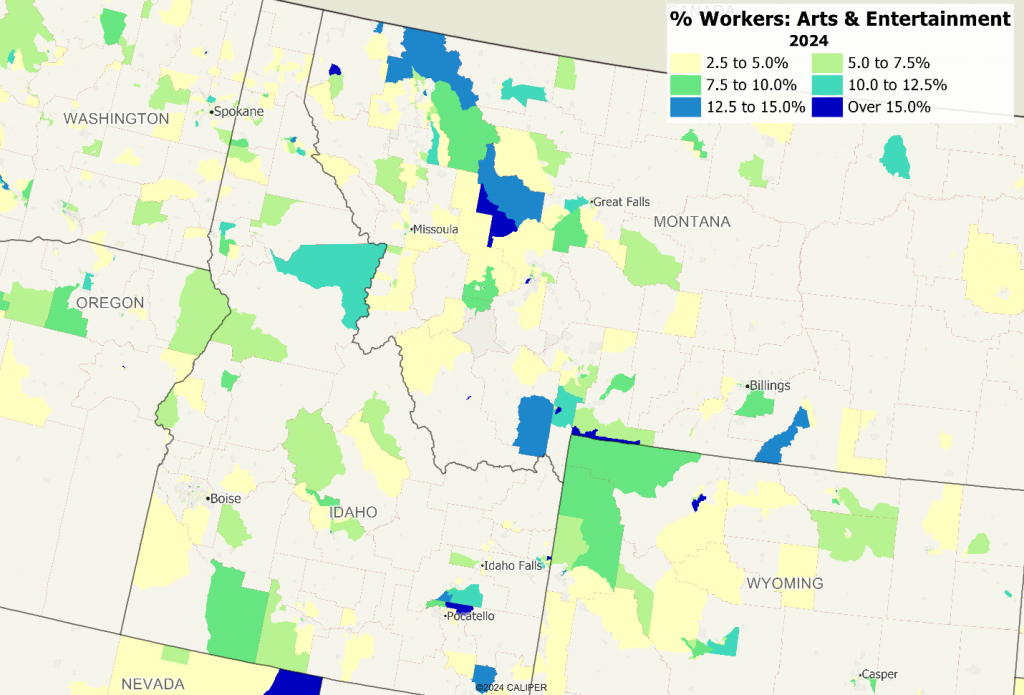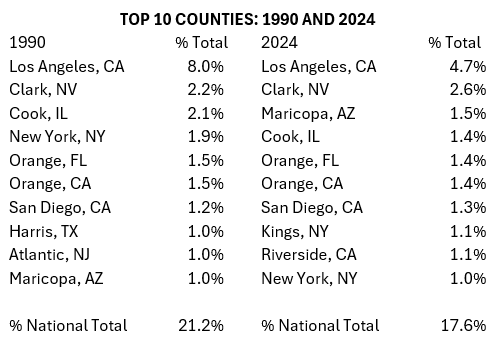When you think about television and movie production, you are likely to think about Hollywood, California as the center of that industry. While it’s true that Los Angeles County has the highest percentage of the national labor force in arts, entertainment and recreation occupations, the industry is dispersing into other areas. If they aren’t filming in Hollywood, where are they making your favorite movies and shows? And why are they taking their business elsewhere?
To start, we need to look back at historical data and understand what we are talking about. First, this occupational category of arts, entertainment and recreation can include things other than TV and movie work, including artists, those involved in theatre productions, and much more. Therefore, we can’t necessarily isolate those working in TV and movies exclusively. What we can do, however, is see the shift in these jobs over time. In Los Angeles County, 8% of workers were in these occupations in 1990, but today, it is down to just 4.75% of the workforce.
In fact, there has been a large dispersal in the industry, even in Los Angeles. In 1990, these workers were heavily concentrated, as over 15% of total employment from Hollywood to Studio City, spreading to Santa Monica and Malibu, were people in entertainment, as the map below shows.

By 2024, the employment pattern shows only remnants of the past, but with limited areas of high employment.

As we looked at the data, it was clear that those jobs have shifted elsewhere. Of course, if you watch the credits on shows and movies, you will sometimes see where they were made. With the rise of shows like Yellowstone (and the many spin-offs) one thing we did find particularly interesting is the concentration of this sector in Montana which has developed over the last few decades, as seen on the map below.

The top counties for employment in arts, entertainment, and recreation, 1990 and 2024:

What is behind this? The locational advantage of southern California has largely disappeared over time – primarily due to technological change but aided by the widespread use of tax advantages by state governments elsewhere. Tax credits and other incentives have been used by many states and Canadian provinces to lure film production away from Hollywood. The introduction of digital technology has allowed the acting to occur in completely different locations than the film set, or eliminating the film set altogether. High cost of living in southern California, coupled with increased mobility, means that the high cost talent need not live locally, and many have fled for lower tax jurisdictions.
